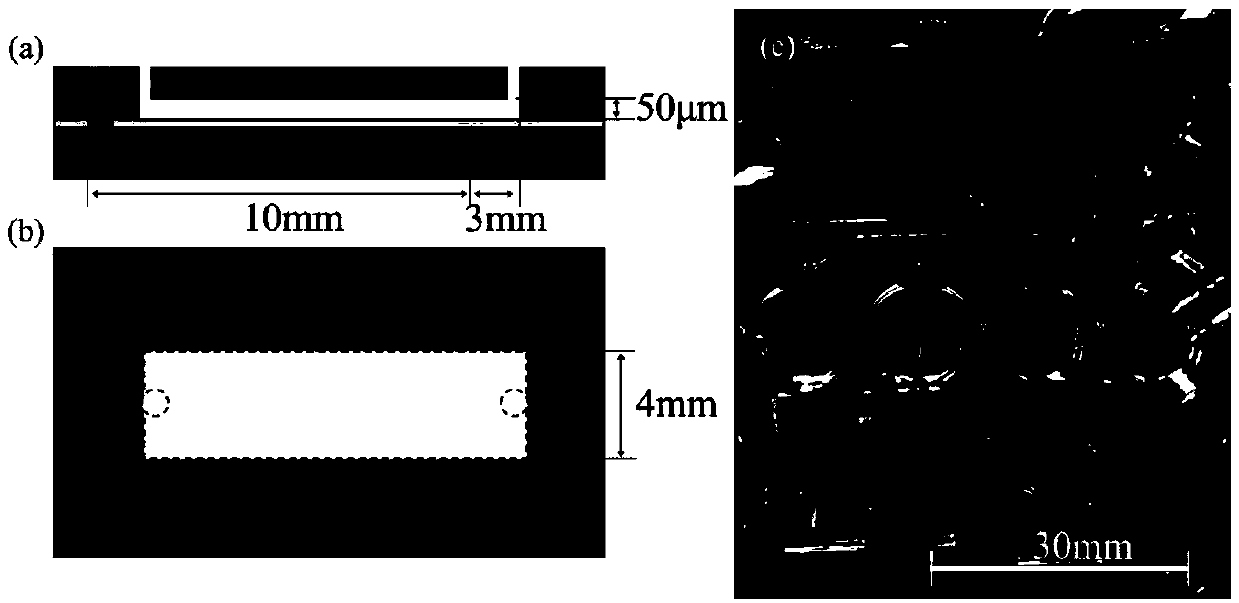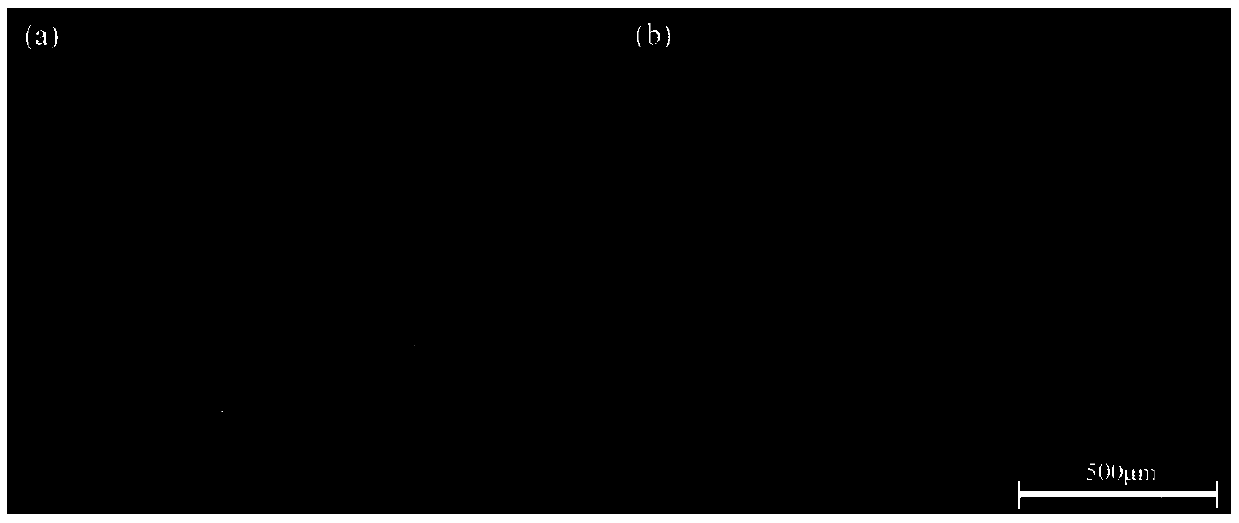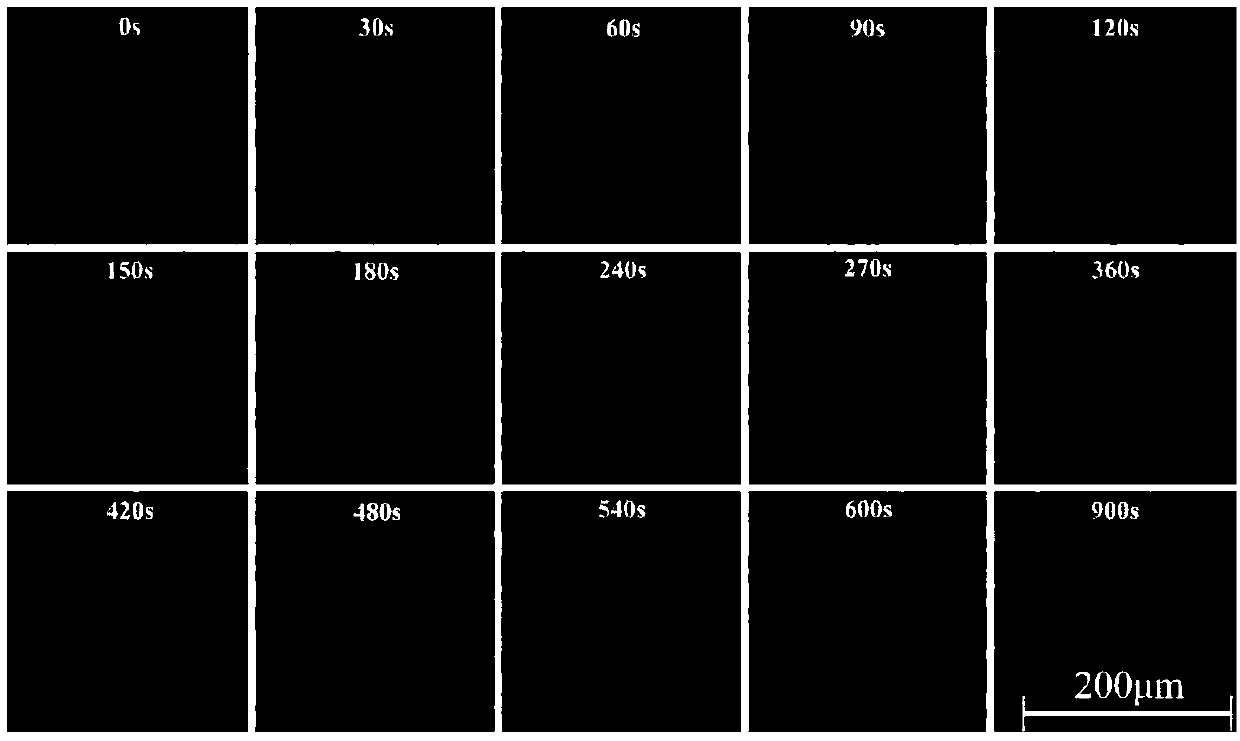Hydrogel-based trace whole blood separation and plasma detection integrated microfluidic chip
A microfluidic chip and hydrogel technology, applied in the biological field, can solve problems such as limiting the convenience of detection, achieve the effect of improving portability, improving utilization rate, and realizing minimally invasive instant testing
- Summary
- Abstract
- Description
- Claims
- Application Information
AI Technical Summary
Problems solved by technology
Method used
Image
Examples
Embodiment 1
[0041] Example 1. Preparation of microfluidic chip for separation of whole blood based on hydrogel and plasma detection
[0042] 1.1 Experimental materials
[0043] 1.1.1 Experimental reagents:
[0044] 1) Polydimethylsiloxane (Polydimethylsiloxane, PDMS) prepolymer and its initiator were purchased from Dow Corning, USA;
[0045]2) Negative photoresist SU-8 2050 and its developer were purchased from Micro Chem in the United States;
[0046] 3) Polycarbonate membrane (Polycarbonate membrane, pore size 1 μm), purchased from MerckMillipore, USA;
[0047] 4) IGF-1 protein detection kit (Human IGF-I DuoSet ELISA kit) was purchased from American R&D Company.
[0048] 5) TMB Chromogenic Kit, purchased from Shanghai Sangon Bioengineering Co., Ltd.
[0049] 6) 3-(Trichlorosilyl)propylmethacrylate (3-(Trichlorosilyl)propylmethacrylate, TMB), purchased from Fluka Chemicals, USA.
[0050] 7) Paraffin oil (Paraffin), purchased from Acros Company in the United States.
[0051] 8) Amin...
Embodiment 2
[0093] Example 2, Characterization of PEGDA hydrogel in microfluidic chip
[0094] Determination of Hydrogel's Ability to Immobilize Microspheres
[0095] experimental method:
[0096] Pipette 10 μL of the prepared microsphere-photocrosslinking prepolymer mixture and drop it on the glass slide.
[0097] Under the fluorescent inverted microscope, use the ultraviolet excitation light of the microscope to expose for 15s, so that the exposed part forms a hydrogel microcolumn, and take pictures for recording.
[0098] Use 50 μL of PBS buffer to wash the samples on the slide three times, observe the results under a microscope and take pictures for recording.
[0099] Experimental results:
[0100] figure 2 It shows that the hydrogel microcolumn can wrap the polystyrene microsphere firmly so that it cannot be washed away by the solution. The experimental results show that the PEGDA hydrogel under the conditions of this study can be used as the immobilization carrier of the micr...
Embodiment 3
[0113] Example 3, Microfluidic chip adsorption protein solution identification
[0114] experimental method:
[0115] The whole blood sample was used as the experimental group, the hemolyzed plasma sample was used as the positive control, and the PBS buffer was used as the negative control, and 2 μL of the sample and the buffer were injected into the microfluidic chip, and allowed to stand for 10 minutes.
[0116] Disassemble the chip, take out the micropad with pointed tweezers, place it on a clean cover glass prepared in advance, and observe it in front of a white background.
[0117] Experimental results:
[0118] Figure 5 Shows the whole process of the hydrogel chip absorbing plasma from whole blood: first inject the immune microsphere-PEGDA hydrogel prepolymer mixture into the lower channel, and form a hydrogel by ultraviolet exposure; then inject whole blood into the upper channel; plasma After infiltrating the filter membrane, it contacts the hydrogel and is adsorbe...
PUM
| Property | Measurement | Unit |
|---|---|---|
| diameter | aaaaa | aaaaa |
| pore size | aaaaa | aaaaa |
Abstract
Description
Claims
Application Information
 Login to View More
Login to View More - R&D
- Intellectual Property
- Life Sciences
- Materials
- Tech Scout
- Unparalleled Data Quality
- Higher Quality Content
- 60% Fewer Hallucinations
Browse by: Latest US Patents, China's latest patents, Technical Efficacy Thesaurus, Application Domain, Technology Topic, Popular Technical Reports.
© 2025 PatSnap. All rights reserved.Legal|Privacy policy|Modern Slavery Act Transparency Statement|Sitemap|About US| Contact US: help@patsnap.com



